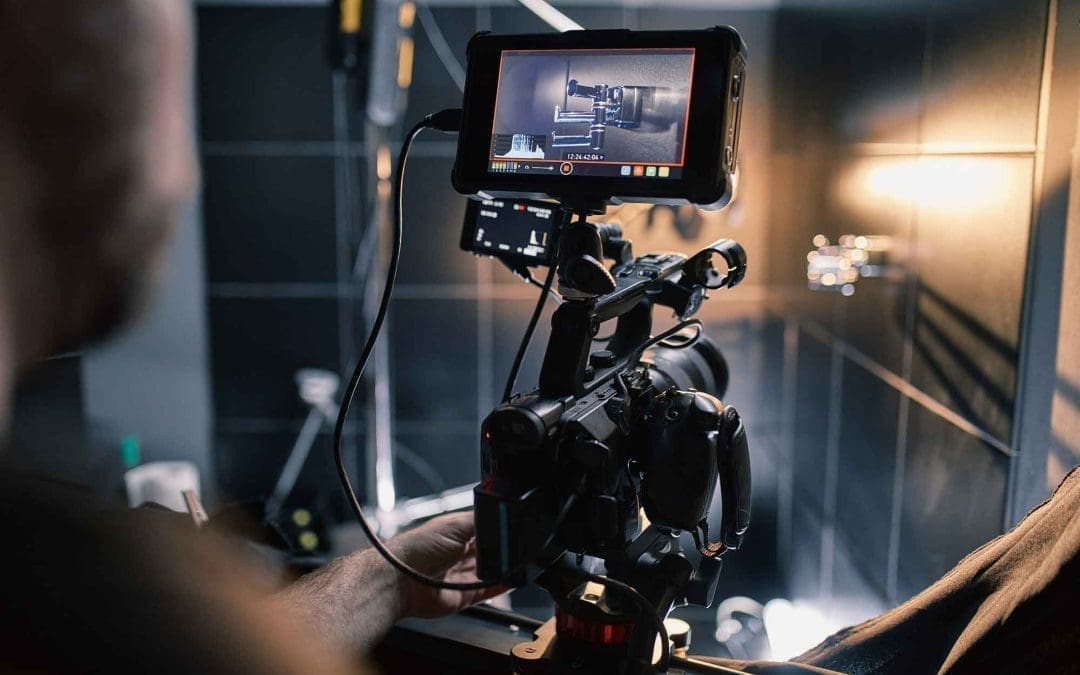Lights, cameras, action! Welcome to the exciting world of video production, where creativity and storytelling collide to bring captivating visuals to life. In this mesmerizing behind-the-scenes journey, we will dive into the inner workings of a successful video production company, uncovering the magic that happens from script to screen. From the initial brainstorming sessions where ideas are born, to the meticulous planning and coordination of the shoot, and finally, the post-production process that brings it all together, this captivating exploration will leave you with a newfound appreciation for the art of visual storytelling. Join us as we peel back the curtain and reveal the secrets behind what it takes to create unforgettable videos that captivate audiences and make an impact. Get ready for an exclusive backstage pass into the world of a video production company, where dreams become reality and every frame tells a story. Are you ready for your close-up? Let’s dive in!
The Scriptwriting Process
The script is the foundation of any successful video production. It sets the tone, conveys the message, and guides the entire creative process. The scriptwriting process starts with brainstorming sessions, where ideas are explored and developed. This is where the magic happens – ideas are thrown around, concepts are refined, and the story begins to take shape. Once the concept is solidified, the scriptwriters get to work, crafting compelling narratives that engage and captivate audiences.
During the scriptwriting process, it’s essential to keep the target audience in mind. Understanding their needs, interests, and preferences is crucial for creating content that resonates with them. The scriptwriters also collaborate closely with the production team to ensure that the script aligns with the creative vision and logistical constraints of the project.
Once the script is finalized, it serves as a blueprint for the entire production process. It guides the director, cinematographer, and actors, providing them with a clear vision of the story they need to bring to life. The script is the backbone of a successful video production, and every decision made during the production process revolves around it.
Pre-production: Planning and Organization
 Before the cameras start rolling, there’s a lot of planning and organization that goes into a successful video production. This pre-production phase is crucial for laying the groundwork and ensuring a smooth production process. It involves tasks such as setting up the production team, securing necessary permits, and scouting locations.
Before the cameras start rolling, there’s a lot of planning and organization that goes into a successful video production. This pre-production phase is crucial for laying the groundwork and ensuring a smooth production process. It involves tasks such as setting up the production team, securing necessary permits, and scouting locations.
Setting up the production team is essential to ensure that all aspects of the production are handled by skilled professionals. This includes hiring a director, cinematographer, production coordinator, and other key crew members. Each member of the team plays a vital role in bringing the script to life, and their expertise and creativity are invaluable.
Another critical aspect of pre-production is location scouting. Finding the perfect location that aligns with the script and captures the desired atmosphere and mood is crucial. Location scouts visit potential locations, taking into consideration factors such as accessibility, lighting conditions, and available resources. The selected locations contribute significantly to the overall visual impact of the video and play a vital role in telling the story.
Managing the production schedule is also a crucial part of pre-production. A well-planned schedule ensures that all the necessary shots are captured efficiently, minimizing downtime and maximizing productivity. This involves coordinating with the production team, actors, and any external resources required for the shoot.
Equipment and Technology for Video Production
In the world of video production, having the right equipment and technology is essential to create high-quality videos. From cameras and lenses to lighting and audio equipment, each piece of gear plays a crucial role in capturing stunning visuals and crisp audio.
The choice of camera and lenses depends on the specific requirements of the project. Different cameras offer varying resolutions, frame rates, and dynamic range, allowing filmmakers to achieve different visual styles and aesthetics. Similarly, the choice of lenses can greatly impact the look and feel of the footage, with options ranging from wide-angle lenses for expansive shots to telephoto lenses for close-ups.
Lighting equipment is another essential component of video production. Proper lighting can transform a scene, enhancing mood, and creating depth. Different lighting setups, such as key lights, fill lights, and backlighting, can be used to achieve different effects and create the desired atmosphere.
Sound quality is equally important in video production. Poor audio can ruin even the most visually stunning video. To ensure clear and crisp audio, a range of microphones and recording equipment are used. These include boom microphones, lavaliere microphones, and audio recorders, among others.
The Importance of Location Scouting
When it comes to video production, location scouting is a crucial step that can make or break a project. The right location can elevate the storytelling and create a visually stunning backdrop for the video. On the other hand, a poorly chosen location can undermine the impact of the video and distract the audience.
During the location scouting process, the production team visits potential locations to assess their suitability for the project. Factors such as accessibility, lighting conditions, and available resources are taken into consideration. The location should align with the script, capture the desired atmosphere and mood, and be practical for the production.
A well-chosen location adds depth and authenticity to the video, immersing the audience in the story. Whether it’s a picturesque outdoor setting, a unique urban location, or a carefully designed set, the location sets the stage and creates the visual context for the narrative.
Managing the Production Schedule
Managing the production schedule is a crucial aspect of video production. A well-planned schedule ensures that all the necessary shots are captured efficiently, minimizing downtime and maximizing productivity. This involves coordinating with the production team, actors, and any external resources required for the shoot.
The production schedule is typically broken down into different scenes or shots, with each having a designated time slot for filming. The schedule takes into account factors such as location availability, actor availability, and the complexity of each shot. A detailed schedule helps ensure that all the necessary footage is captured within the allocated time frame.
During the production process, unexpected challenges can arise. Weather conditions may change, equipment may malfunction, or actors may require additional time for rehearsals. A well-managed production schedule allows for flexibility and contingency plans to accommodate unforeseen circumstances and keep the production on track.
Directing and Capturing the Footage
Once all the pre-production planning is complete, it’s time to bring the script to life. The director plays a crucial role in guiding the actors, cinematographer, and the rest of the production team to capture the desired footage. They ensure that the performances align with the script, the shots are framed correctly, and the overall vision is realised.
The director communicates their vision to the actors, guiding them through their performances and helping them bring their characters to life. They work closely with the cinematographer, discussing shot composition, camera movement, and lighting to achieve the desired visual aesthetic. The director’s creative decisions shape the look and feel of the video, making them a key player in the production process.
The cinematographer, also known as the director of photography, is responsible for capturing the footage. They work closely with the director to translate the script into visually stunning images. The cinematographer chooses the camera and lenses, sets up the lighting, and frames each shot to convey the desired mood and emotion.
Throughout the production process, the director and cinematographer collaborate to ensure that the footage aligns with the creative vision. They make adjustments, provide feedback, and capture multiple takes to achieve the desired result. This collaborative effort between the director, cinematographer, and the rest of the production team is essential for capturing footage that tells a compelling story.
Post-production: Editing and Adding Special Effects
Once the footage is captured, it’s time to bring it all together in the post-production phase. This is where the magic happens – raw footage is transformed into a polished, cohesive video that captivates audiences. The post-production process involves editing the footage, adding special effects, and refining the audio.
The editor plays a crucial role in shaping the final video. They meticulously review the footage, select the best takes, and assemble them in a coherent sequence. The editor considers factors such as pacing, rhythm, and storytelling to create a seamless narrative that engages the audience. They also work closely with the director, incorporating their feedback and making revisions as needed.
In addition to editing, special effects can be added to enhance the visual impact of the video. This can range from simple color grading and visual enhancements to complex CGI and visual effects. Special effects can transport the audience to new worlds, create fantastical creatures, or simply add a touch of magic to the video.
Sound design and music selection also play a crucial role in post-production. Sound effects are added to enhance the overall audio experience, while music sets the mood and amplifies the emotional impact of the video. The right combination of sound effects and music can elevate the storytelling, immersing the audience in the narrative and creating a memorable viewing experience.
Distribution and Marketing of the Final Product
Once the video is complete, it’s time to share it with the world. Distribution and marketing play a crucial role in reaching the target audience and maximizing the video’s impact. There are various distribution channels to choose from, including online platforms, social media, television, and film festivals.
Online platforms such as YouTube, Vimeo, and social media platforms offer a wide reach and allow for easy sharing and engagement. These platforms provide an opportunity to connect directly with the target audience and receive feedback. Sharing the video on social media and utilizing targeted advertising can help increase visibility and reach a larger audience.
Television is another distribution channel that offers a broader reach, especially for commercials, corporate videos, and documentaries. Television networks have established audiences and can help reach specific demographics. Film festivals provide an opportunity to showcase the video to industry professionals, critics, and potential clients, opening doors for future collaborations and opportunities.
Marketing the video is crucial to create buzz and generate interest. This can include creating teaser trailers, behind-the-scenes content, and engaging with influencers and industry publications. A well-executed marketing strategy can help generate excitement, increase views, and create a lasting impact.
Success Stories from Video Production Companies
Behind every successful video production company are countless success stories that showcase their creativity, talent, and ability to captivate audiences. From award-winning commercials that leave a lasting impression to viral videos that take the internet by storm, these success stories demonstrate the impact of video production on businesses and audiences.
One such success story is the viral sensation “Dumb Ways to Die” by Metro Trains Melbourne. This animated video created awareness about train safety in a fun and engaging way. The catchy song, colorful animation, and relatable characters captured the attention of millions of viewers worldwide, resulting in increased awareness and positive behavior change.
Another success story is the Nike commercial “Write the Future.” This cinematic masterpiece showcased the power of visual storytelling, following the journey of football players as they faced pivotal moments in their careers. The commercial captured the imagination of viewers and became a cultural phenomenon, inspiring and motivating athletes worldwide.
These success stories highlight the ability of video production companies to create content that resonates with audiences, sparks conversation, and leaves a lasting impact. Through their creativity, storytelling, and technical expertise, video production companies have the power to shape narratives, evoke emotions, and inspire change.
Conclusion: The Impact of Video Production on Businesses and Audiences
Video production is a powerful tool that has a profound impact on businesses and audiences alike. It allows businesses to communicate their messages effectively, engage with their target audience, and differentiate themselves in a crowded marketplace. Videos have the ability to convey emotions, tell stories, and create connections in ways that other forms of communication simply can’t match.
For audiences, videos offer a captivating and immersive experience. They allow viewers to escape into different worlds, experience different perspectives, and connect with the stories being told. Whether it’s a heartfelt commercial, an informative documentary, or an entertaining web series, videos have the power to entertain, educate, and inspire.
From script to screen, the journey of a successful video production company is filled with creativity, collaboration, and countless hours of hard work. It requires a unique blend of technical expertise, artistic vision, and storytelling prowess. But when done right, the impact of video production can be truly transformative, bringing ideas to life, capturing hearts and minds, and leaving a lasting impression. Lights, cameras, action – the world of video production awaits!

